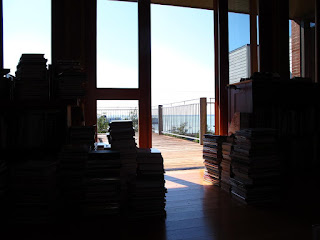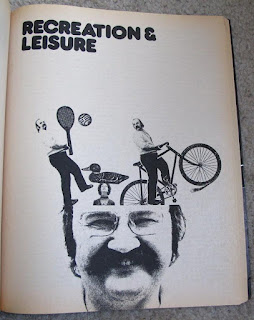 Disclaimer: The review you’re about to read will not be an astringent, detached, hypercritical review. This retrograde, gun-happy USan loves Canada and I have enjoyed this book massively. If you’re looking for a jaundiced review with the hidden agenda of eliminating the crypto-fascist sport of Curling, please look elsewhere.
Disclaimer: The review you’re about to read will not be an astringent, detached, hypercritical review. This retrograde, gun-happy USan loves Canada and I have enjoyed this book massively. If you’re looking for a jaundiced review with the hidden agenda of eliminating the crypto-fascist sport of Curling, please look elsewhere. Some books seem to have their own personalities: verbose, chatty, dry or moody but they leave you feeling as if you’ve just sat down and talked with the author, instead of absorbing second hand something they typed into a machine. This is one such book and its personality is a pleasant one, deeply informative and very witty. It’s like running into a favorite teacher after you’ve spent 20 years learning your own lessons and finding them still as engaging and interesting as you remember.
The funny thing is that this book shouldn’t be so engaging: its 800 pages cover a wide variety of topics in great depth. The credit for the accessibility of this information can only belong to its author. Seriously, I’ve got a shelf full of books about Western Canada and this is one of about 2-3 that I’ll fit into my backpack when I motorcycle up to the Rockies this Summer. If I could only take one, this would be the one.
As for the handbook’s contents… pick a topic and it’s probably inside. It covers the geology of the Canadian Rockies; life zones, weather and seasons; plants and animals; human history and things to do during your visit; safety, first aid and futures. There are 800 pages of this information here and I find myself reading through it avidly.
So far I’ve been attempting to convey the book’s tone. Let me describe a bit about its content, which is clearly planned out to engage people who are visiting for whatever reason and help them enjoy and LEARN from their visit, as much as possible. At the risk of seeming hyperbolic, this is a book that can enhance your visit to the Canadian Rockies, no matter what your original purpose in visiting was.
First off, after looking at how much of each type of content is provided, I find it quite interesting that some 2/3 of the book’s 800 pages are concerned with 1) the geology of the area and 2) its plants and animals.
The geology section describes the various types of rock found in the park and how natural forces created and placed them, their locations and formations being further shaped by the slow sculpting of glaciers. When you’re looking at striking rock layers on a rock wall (or a lonely, mysterious glacial erratic) and wonder how they got there, the geology section can help you really understand the story that those rocks represent.
Moving on, fully half the book is devoted to plants and animals of the park. Accompanying the words are a wealth of high quality drawings and photos of those plants and animals. Mushrooms, ferns, and trees… every kind of animal, from earthworms and the ubiquitous mosquito to grizzly bears and even a wry, witty description of that wacky mammal, Homo Sapiens. Information about indigenous animals describes their habits and behavior; drawings of their skulls, footprints and droppings are included so that hikers can decipher some of the drama that has recently occurred where they are walking.
Any visit to the park will be deeply influenced by the weather, be it daily precipitation, seasonal accumulations or melting of snow. Details regarding what might be expected in various life zones, e.g., sub-alpine woods, burn zones, the mountain summits themselves, are presented.
In regard to the human history of the Rockies, information is provided about all the human history there: not just the 250 years or so or transplanted European history but also known history of native tribes and peoples who have lived or passed through the area.
Certainly anyone who will make the effort of visiting the Canadian Rockies has some purpose for doing so. However, the handbook also details some of the author’s favorite sights and places. There are vistas to view and say “Awe” (in fact Yoho is a whole park devoted to that) and some of the best recreational opportunities in North America. The very best are detailed here. It must be noted however that no information about Curling opportunities is presented.
While this area is deeply gorgeous and fascinating, there are things that can bite you here, both figuratively and literally. There’s traffic to be aware of and all the normal risks of whatever outdoor recreational endeavors you choose are obviously present here as well. The handbook describes many of these and provides some basics on first aid should somebody be hurt.
Finally, the handbook includes plenty of information on how to keep the park safe from damage caused by you and some steps that can help protect these fantastic resources and sites for future generations.
Let me conclude this review by emphasizing that with all the detailed and sometimes technical information presented in this handbook, it is a deeply entertaining and enjoyable read, due to the deft writing and wry humor of Ben Gadd. I am using the handbook to help plan my visit this Summer, taking it along with me for information and entertainment and will certainly use it after wards, as a resource when I write about my trip.













